Are you having trouble with a lockup torque converter in your vehicle? This can be a frustrating issue to deal with, as it can cause your car to stall or have problems shifting gears. In this guide, we will explain how to identify a lockup torque converter.
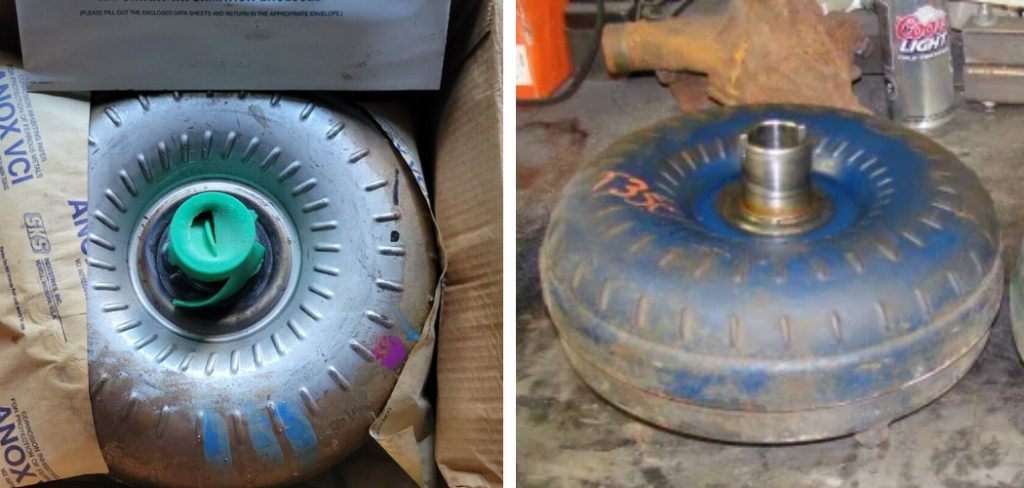
The lockup torque converter is a crucial component of an automobile’s transmission system, designed to improve fuel efficiency and engine performance. Identifying a lockup torque converter is the first step in understanding how it functions and why it’s beneficial to your vehicle. This guide will walk you through the telltale signs and symptoms that suggest the presence of a lockup torque converter within your transmission.
By grasping these key indicators, you’ll be able to ensure your vehicle operates at peak efficiency and is equipped with the knowledge to address any potential issues related to this ingenious device.
What are the Use Cases of Lockup Torque Converters?
Lockup torque converters are primarily designed to improve fuel efficiency and reduce engine heat build-up in modern vehicles. In automatic transmissions, the inner workings of a lockup torque converter “lock” at high speeds, creating a direct coupling between the engine and transmission components.
With this direct connection, there is less slippage in the transmission system, resulting in less heat being generated and a smoother transfer of power. This efficiency level can ultimately lead to reduced fuel consumption and increased engine performance.
Though primarily intended for fuel economy improvements, lockup torque converters have also evolved to serve other purposes. In some high-performance vehicles, they are used to enhance acceleration by providing a direct connection between the engine and transmission at lower speeds.
What Will You Need?
Before identifying a lockup torque converter, it’s important to gather some essential tools and equipment. You will need the following:
- A reliable vehicle service manual that provides detailed information about the transmission system of your specific car model.
- A basic set of hand tools, including ratchets, sockets, and screwdrivers.
- A flashlight for better visibility under the hood.
- Safety equipment such as gloves and eye protection.
- A diagnostic scan tool or code reader (if available) to check for any error codes related to the torque converter.

10 Easy Steps on How to Identify a Lockup Torque Converter
Step 1. Check the Error Codes:
Connect your diagnostic scan tool or code reader to the vehicle’s onboard diagnostics port. Look for any transmission-related error codes, specifically those about the torque converter clutch (TCC) system. As a lockup torque converter is an electronically controlled component, error codes can help pinpoint the issue quickly.
Step 2. Read the Vehicle Service Manual:
Refer to your vehicle service manual to accurately locate and identify the various components of your transmission system. Within these pages, differentiate between a lockup and a non-lockup torque converter and comprehend how each operates within the system.
The manual will illustrate the type of converter your vehicle utilizes and its positioning in relation to other essential transmission parts. This background knowledge is crucial when physically examining the torque converter and understanding its connection to the operation and performance of your vehicle.
Step 3. Inspect the Transmission Fluid:
Before proceeding directly to the lockup torque converter, ensure the transmission fluid is at the proper level and in good condition. A low or burnt-smelling fluid level can indicate torque converter problems. The state of the fluid can provide preliminary clues to the converter’s operation.
It should be bright red and not emit any burnt odor. If the fluid is dark or discolored and smells burnt, this may signify that the lockup torque converter is overheating and possibly malfunctioning.
Step 4. Listen for Changes in Engine Sound:
Pay close attention to your engine’s sound and behavior during acceleration and at cruising speeds. A lockup torque converter functioning correctly should result in a smooth and almost unnoticeable transition from the engine to the transmission.
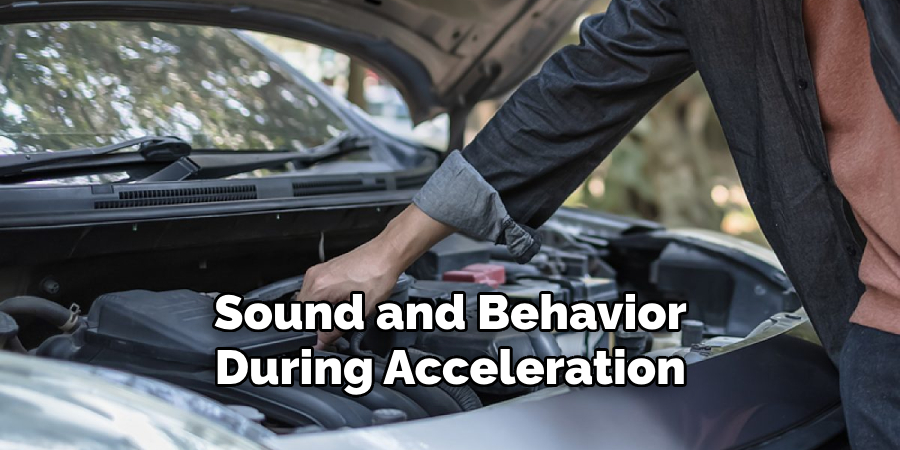
If you hear any strange noises, such as a shuddering or a sudden change in engine pitch when the converter is supposed to lock, this may indicate a lockup issue. These auditory cues are crucial for diagnosing the health and functionality of the torque converter.
Step 5. Analyze the Vehicle’s Performance:
Monitor your vehicle’s performance, specifically looking for signs of slippage during acceleration or when the car is supposed to shift gears. A lockup torque converter that doesn’t engage properly can cause the engine to rev up without a corresponding increase in speed — a clear indication of an issue with the transmission ‘locking’ mechanism.
Also, be cautious of any unexpected surges in rate, as these, too, can highlight a malfunction within the lockup system.
Step 6. Feel for Transmission Shudder:
During operation, a noticeable shudder or vibration when the vehicle shifts into overdrive can indicate a failing lockup torque converter. This sensation is often most apparent when the vehicle transitions to a higher gear, and the torque converter is supposed to engage.
Detecting this kind of shudder often points to a problem within the lockup mechanism that may require professional attention.
Step 7. Monitor the Tachometer:
Monitor the tachometer while driving, significantly when the vehicle shifts gears. A functioning lockup torque converter should reduce the engine RPMs significantly as it locks, promoting better fuel efficiency and reduced engine strain.
If the RPMs fail to decrease or fluctuate erratically when the torque converter should be engaging, this could suggest a malfunction in the lockup feature. It is a subtle yet vital sign that warrants further investigation into the torque converter’s operation.
Step 8. Observe the Overdrive Function:
When driving at higher speeds, engage the overdrive and observe how your vehicle responds. A lockup torque converter should allow the car to enter overdrive smoothly, reducing the engine’s workload and increasing fuel efficiency.

Suppose you notice the engine struggling or failing to maintain consistent speed in overdrive. In that case, the lockup feature may not be engaging correctly, which can lead to decreased performance and potential damage over time.
Step 9. Test the Torque Converter Stall Speed:
Perform a stall speed test to evaluate the torque converter’s efficiency. This involves pressing the accelerator while the vehicle is in gear and fully applying the brakes, allowing the engine to reach a maximum RPM without moving the car.
Compare the observed stall speed to the specifications provided in your service manual. If the stall speed is significantly higher, it may indicate a problem with the lockup mechanism of the torque converter that prevents it from properly engaging.
Step 10. Seek Professional Assessment:
If you have completed the previous steps and still suspect an issue with your lockup torque converter, or if you’re uncertain about any findings, it’s advisable to consult with a professional mechanic.
They can perform advanced diagnostics, confirm the problem with certainty, and suggest the appropriate repair or replacement options for your torque converter. Seeking professional expertise ensures accurate diagnosis and can prevent potential vehicle transmission damage.
By following these steps and regularly monitoring the performance of your lockup torque converter, you can play an active role in ensuring that your vehicle is running smoothly and efficiently.
6 Things You Should Avoid
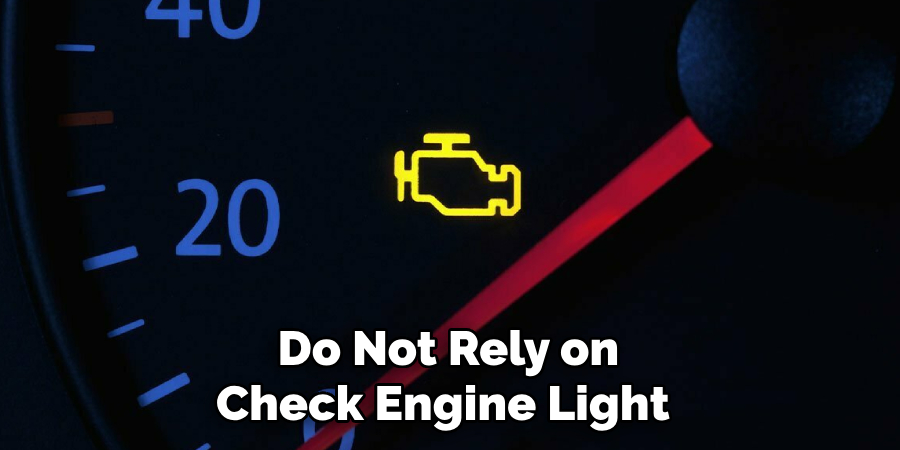
- Ignoring Vehicle Symptoms: One key misstep needs to be paying attention to the signs your vehicle may be displaying. If you observe issues like shuddering or unusual noises when shifting gears, get these symptoms evaluated rather than dismissing them.
- Relying Solely on Check Engine Lights: It’s important to rely on something other than the check engine light for diagnosing issues. Some problems with the lockup torque converter may not trigger the light, so it’s essential to pay attention to the vehicle’s performance as well.
- Skipping Professional Diagnosis: Even if you’re adept at car maintenance, diagnosing a lockup torque converter issue can be complex. Avoid forgoing a professional mechanic’s diagnosis to ensure accurate problem identification.
- Oversimplifying the Process: It’s crucial not to simplify identifying a bad lockup torque converter. Factors like fluid levels, transmission health, and engine performance intertwine and affect diagnosis.
- Disregarding Regular Maintenance: Regular maintenance is critical. Not keeping up with transmission fluid changes or ignoring the servicing schedule can make it difficult to pinpoint if the issues are due to a faulty converter or other maintenance neglect.
- Ignoring the Importance of Quality Parts: When replacing a lockup torque converter, using quality parts is crucial. Cutting corners and using cheap, low-quality components can result in further issues down the line and potentially cause more damage to your vehicle. Therefore, it’s essential to invest in high-quality parts from reputable manufacturers.
When dealing with a lockup torque converter issue, avoiding these common mistakes is crucial. By staying vigilant and addressing any symptoms or concerns promptly, you can ensure your vehicle runs smoothly and efficiently.
Some Frequently Asked Questions
1. What is the Difference Between a Lockup and a Non-Lockup Torque Converter?
A lockup torque converter contains a mechanism that ‘locks’ the engine and transmission shafts together at highway speeds, eliminating the slippage that usually occurs within the converter, thereby improving fuel economy and performance.
Conversely, a nonlockup torque converter lacks this feature, causing continuous slippage and less efficient energy transfer, leading to decreased fuel efficiency and more heat generation within the transmission system.
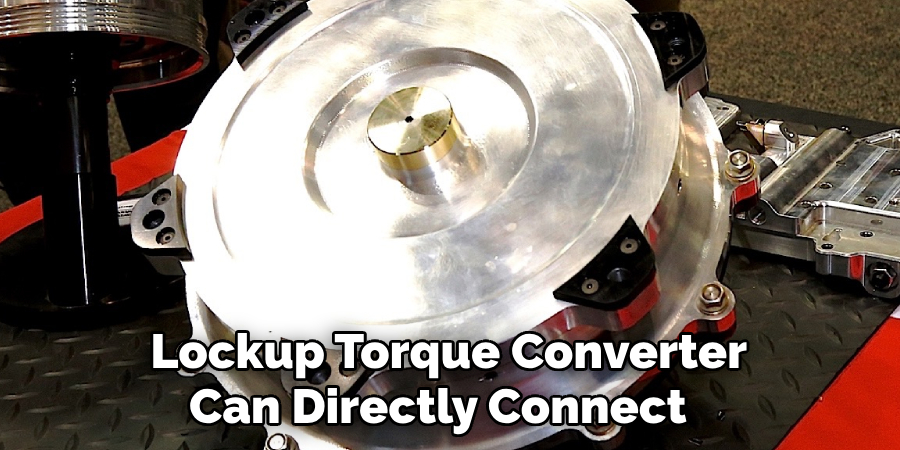
Another significant difference is that a lockup torque converter can directly connect the engine and transmission, allowing for more precise control over vehicle speed and acceleration. In contrast, a nonlockup torque converter relies on fluid pressure to transfer power, resulting in a less immediate response.
Overall, a lockup torque converter is a more advanced and efficient version of the traditional nonlockup converter, making it the preferred option in modern vehicles.
2. How Do I Know if My Torque Converter is Failing?
Recognizing the signs of a failing torque converter is crucial for vehicle maintenance and preventing costlier damage. Typical symptoms include:
- Overheating: The transmission may overheat due to the additional strain of a malfunctioning converter.
- Shuddering: You might feel a shudder or bucking sensation from your vehicle, especially when accelerating or cruising at highway speeds.
- Odd Sounds: Whirring, clicking, or humming noises from the transmission could indicate that the torque converter’s components are failing.
- Transmission Slippage: A telltale sign of a failing torque converter is delayed or erratic shifting, which feels like the gears are slipping.
- Fluid Contamination: If the torque converter is damaged, metal or debris may be in the transmission fluid.
- Increased Stall Speed: This refers to the RPM at which your engine needs to be for the vehicle to move forward from a complete stop. If this number has risen, it could be due to a failing torque converter.

Should you notice any of these symptoms, having your vehicle inspected by a professional is prudent to determine if the torque converter is indeed the issue.
3. How Can You Fix a Lockup Torque Converter?
Repairing a lockup torque converter typically involves a sequence of steps that a professional mechanic should undertake due to the complexity of the transmission system. Here’s a general outline of what the repair process may involve:
- Diagnostic Testing: The first step is to use a diagnostic scan tool to read any trouble codes from the vehicle’s computer and thoroughly check the transmission system to confirm that the torque converter is at fault.
- Draining Transmission Fluid: If a converter replacement is needed, the mechanic will drain the existing fluid, which is also an opportune time to look for signs of contamination that can indicate further issues.
- Removal & Inspection: The transmission must be removed to access the torque converter. During this process, the mechanic will inspect for additional damage to the information or nearby components.
- Installing New Converter: A new, quality lockup torque converter is installed. Choosing a reputable brand is essential to ensure the repair’s longevity.
- Refill Transmission Fluid: Fresh transmission fluid is added, which can also help improve the overall health and efficiency of the transmission system.
- Test Drive and Monitor: After repairs, the mechanic will perform a test drive and monitor the vehicle’s performance to ensure the issue has been resolved.
It’s important to note that due to the intricate nature of automatic transmissions, attempting a DIY fix is not recommended unless you possess advanced mechanical knowledge and the proper tools.
4. How do You Differentiate Between a Bad Transmission and a Bad Torque Converter?
Distinguishing between a failing transmission and a lousy torque converter is essential to vehicle maintenance. Common indicators that the problem lies with the message include difficulty shifting gears, unresponsive or delayed gear shift, fluid leaks under the car, and a persistent burning smell that indicates overheating. A malfunctioning transmission may also emit a grinding or shaking sensation while in motion.
On the other hand, a bad torque converter often presents itself through symptoms such as slippage at highway speeds, strange noises (such as rattling or whining when the vehicle is idling), a decrease in fuel efficiency, or an increase in stall speed, which is when the engine RPM is higher than usual for the car to start moving.
To correctly diagnose whether the issue lies with the transmission or the torque converter, a thorough inspection by a professional mechanic is advisable. They may perform diagnostic tests that can differentiate between the two since symptoms can sometimes overlap, making it challenging to pinpoint the exact root of the problem without thorough testing.
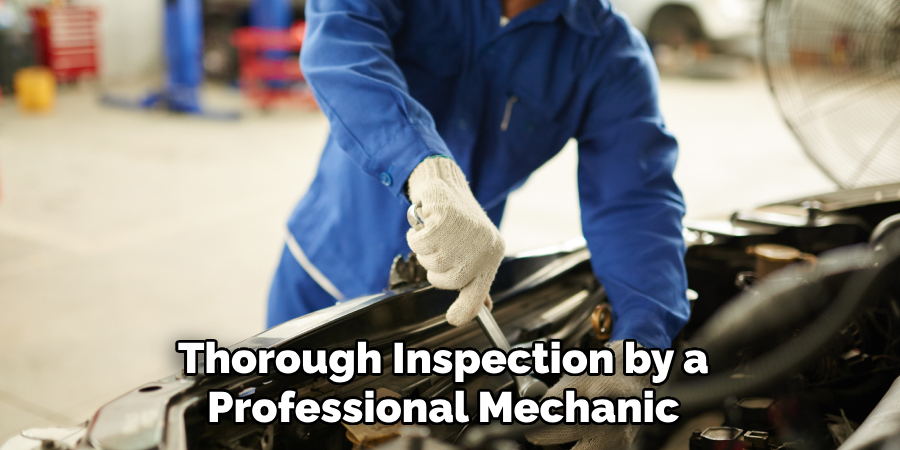
5. What Affects Torque Converter Stall Speed?
Several factors can affect the stall speed of a torque converter, including:
- Torque Converter Design: Different designs and types of torque converters will have varying stall speeds.
- Engine Power & Torque: The engine’s power and torque output play a significant role in determining the stall speed of a torque converter. A more powerful engine will require a higher stall speed to move the car from a complete stop.
- Vehicle Weight: Heavier vehicles will require more power to move, which can also impact the stall speed of the torque converter.
- Transmission Gear Ratio: The gear ratio of the transmission can affect how quickly and efficiently power is transferred from the engine to the wheels, thus affecting stall speed.
- Torque Converter Size & Weight: The size and weight of a torque converter can also affect its stall speed, with larger and heavier converters typically requiring more power to move.
- Transmission Fluid Level & Quality: Low or contaminated fluid can cause the transmission and torque converter to work harder, impacting stall speed.
These factors highlight the importance of maintaining proper transmission health and choosing the right torque converter for your vehicle. Regularly checking and replacing transmission fluid, getting routine inspections by a professional mechanic, and choosing quality parts can all help maintain optimal torque converter stall speed and prolong the life of your transmission system.
Conclusion
In conclusion, identifying a problematic lockup torque converter requires vigilance and attention to your vehicle’s performance. Key symptoms to watch include erratic shifting, unusual noises such as whining or rattling, fluid contamination, and changes in the vehicle’s stall speed.
Understanding and recognizing these signs can help you take timely action to avoid more significant damage. It is critical to consult with a professional mechanic when these issues arise, as they have the expertise to diagnose and confirm whether the torque converter is the source of the problems or if they stem from broader transmission issues.
Proactive vehicle maintenance, including regular inspections and fluid changes, can help keep your torque converter in good working order, safeguarding your transmission’s performance and longevity.
Hopefully, this guide on how to identify a lockup torque converter has provided valuable insight into the repair process and how to distinguish between transmission issues and a bad torque converter.

About
JeepFixes Team is a skilled author for Jeep Fixes, bringing 6 years of expertise in crafting a wide range of jeep fixes. With a strong background in jeep fixes work, JeepFixes Team’s knowledge spans various types of fixtures, from decorative pieces to functional hardware, blending precision with creativity. His passion for jeep fixes and design has made him a trusted resource in the industry.
Professional Focus:
Expert in Jeep Fixes : JeepFixes Team aesthetic specializes in creating durable and innovative jeep fixes, offering both appeal and functionality. His work reflects a deep understanding of jeep fixes techniques and materials.
Sustainability Advocate : He is dedicated to using sustainable practices, ensuring that every fixture is crafted with eco-friendly methods while maintaining high-quality standards.
In his writing for jeep fixes, JeepFixes Team provides valuable insights into the latest trends, techniques, and practical advice for those passionate about jeep fixes, whether they are professionals or DIY enthusiasts. His focus on combining artistry with engineering helps others discover the true potential of jeep in design.
